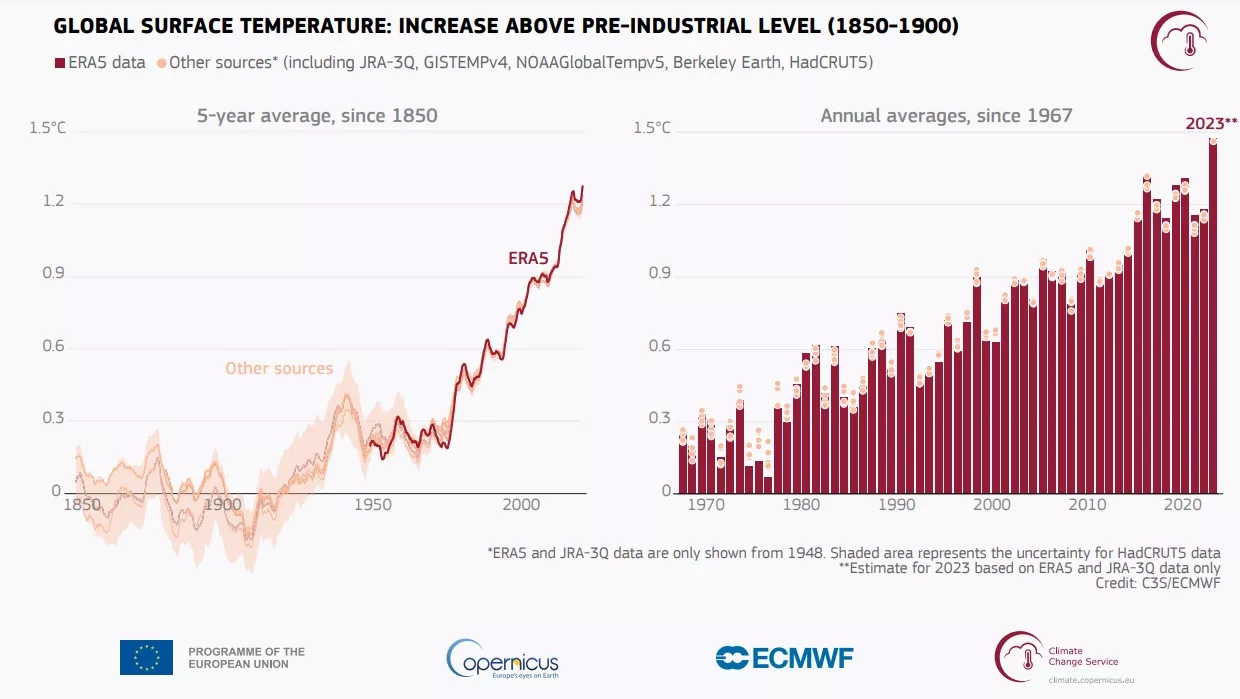The year of 2023 recorded the highest temperatures in the last 100 thousand years, according to a report released this Tuesday (09) by the European observatory Copernicus.
For the first time in history, every day within the same year remained 1°C above pre-industrial levels, and in mid-2023, thermometers exceeded the 1.5°C mark and, on two days in November, they became 2°C warmer.
The explanation for the comparison lies in paleoclimatology, where methods are used to estimate the temperature at a given time by simulating the behavior of the atmosphere in past climates.
On average, the year 2023 was 1.48ºC warmer in the world than in the pre-industrial era. “The year 2023 recorded a global average temperature of 14.98°C, that is, 0.17°C above the last annual record of 2016″, points out the European observatory.

The report also highlights that, although the El Niño phenomenon, which warms surface waters in the eastern Pacific Ocean, has influenced the increase in global temperatures, the extreme heat is the main villain the unstoppable greenhouse gas emissions.
According to the Copernicus report, CO2 concentrations in the atmosphere have increased in recent years and reached alarming levels in 2023: the volume of carbon dioxide and methane reached records, with 419 parts per million (ppm) and 1,902 parts per billion (ppb), respectively.
Compared to 2022, carbon dioxide concentrations were 2.4 ppm higher, while methane concentrations increased by 11 ppb.
Global compact
Global temperature increases were the highlight of discussions at COP 28, held in Dubai, United Arab Emirates, in November last year.
In a moment considered historic, 118 countries (including Brazil) committed to tripling their renewable energy capacities by 2030: from 3,400 GW to 11,000 GW. At the same time, 20 other nations also proposed to do the same with nuclear energy by 2050.
The movement was led by powers such as the European Union, the United States and the United Arab Emirates. In addition to Brazil, countries such as Australia, Japan, Canada, Chile and Nigeria also signed the global pact.
According to analysis of the BCG (Boston Consulting Group), to reduce carbon emissions and curb the impacts of climate change it will take more than US$ 3.5 trillion invested in technologies that accelerate decarbonization by 2050.















